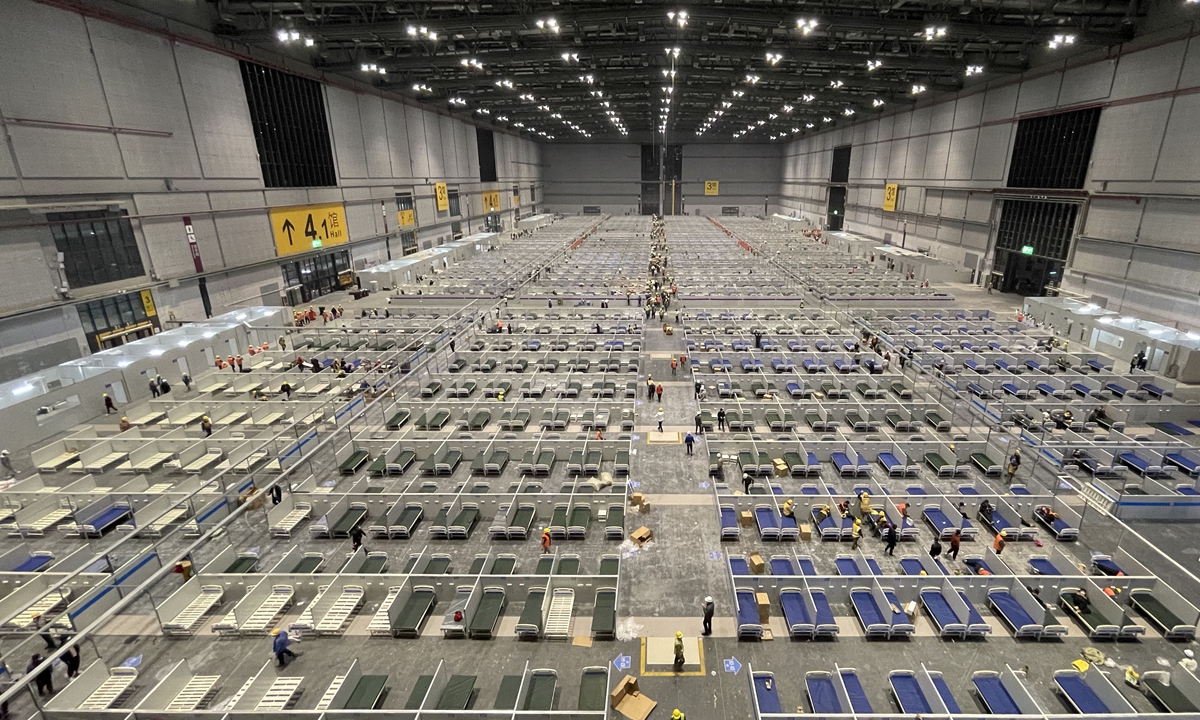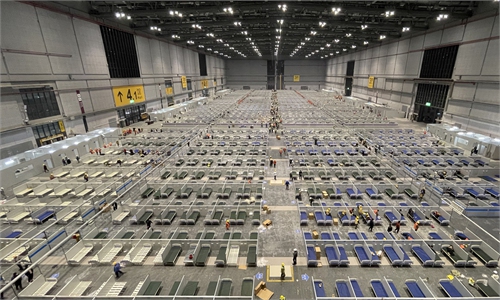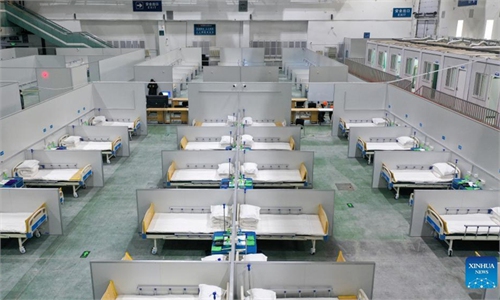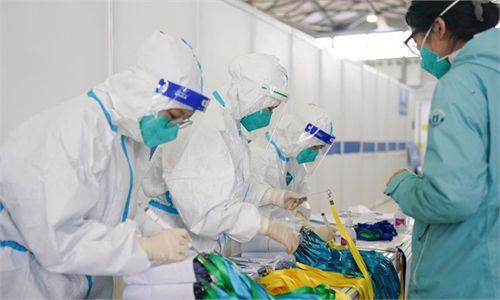Surges in COVID-19 infections in Shanghai stem from delayed release of screening data, family infections and logistics transmission

The largest makeshift hospital in Shanghai, renovated from National Convention & Exhibition Center (Shanghai), will be delivered on April 9, 2022 and is expected to provide up to 50,000 beds. Photo: Xinhua
Despite the fact that local residents in Shanghai have been locked down at home for over two weeks, some even as long as over one month, the daily increases in confirmed and asymptomatic COVID-19 infections remain high. The local disease control authority attributed the situation to the delay of the release of screening data, family infections and transmission via logistics.
Shanghai registered 2,573 locally transmitted confirmed infections and 25,146 asymptomatic carriers on Wednesday. Among the cases, 2,314 confirmed cases and 24,548 silent carriers were detected among closed-loop management.
Shanghai has classified compounds as either “locked down,” “controlled” or “precautionary” based on the screening results and risk situation. As of Tuesday, the city lifted lockdowns for 10,323 compounds involving 4.8 million people after zero COVID-19 positive cases were reported in these regions in the past two weeks.
Since around 20 million residents are still confined at their homes or in their neighborhoods, the surge in the number of new infections has stirred public concerns.
Wu Huanyu, deputy director of the Shanghai Municipal Center for Disease Control and Prevention, explained during a press briefing on Thursday that the delay of the release of screening data has led to increases over the past few days.
According to Wu, the workload of nucleic acid testing is huge since if mixed samples test positive, the suspicious samples will be tested individually and verified again, and follow-up epidemiological investigations will be carried out to collect accurate medical and personal information while accomplishing reporting.
The second reason for the increasing numbers is family infections and the latent and fast spreading characteristics of the Omicron variant. When one family member is infected, other members can test positive in the follow up screenings. At present, transmission inside families is the major transmission channel and the latent period is from three to five days.
Despite residents being confined to their homes, if daily supplies delivered to residents are contaminated, they can cause infections.
Given that the epidemic situation is still grim and complex, epidemiological survey still serves as an important measure for epidemic prevention and every new case will be investigated, Wu said.
According to Wu, the key point of the current work is to investigate if the infection has relation with other infections or other epidemics, if they have suspicious exposure to infections, and then try to trace the origins of the transmission and their close contacts.
Also, densely populated markets, construction sites and companies where people communicate frequently can cause clusters of infection easily, thus epidemiological survey and effective precautious measures are necessary if positive infections are found.
Apart from tracing the itinerary of the infections’ movements, screening out close contacts, blocking transmissions among families, communities and collective companies, epidemiological experts have to summarize and analyze the information of the daily new infections in a bid to make a judgment on the trend of the epidemic and identify and eliminate the risks of epidemic prevention and control, providing a basis for further adjustments of prevention and control measures.
The local health authority noted that despite the registered number of infections in Shanghai being huge, the majority of confirmed cases are mild. At the moment, there are nine severe patients receiving treatment at the designated hospital. Eight of them are elderly patients with severe basic diseases and who are not vaccinated.
Global Times



